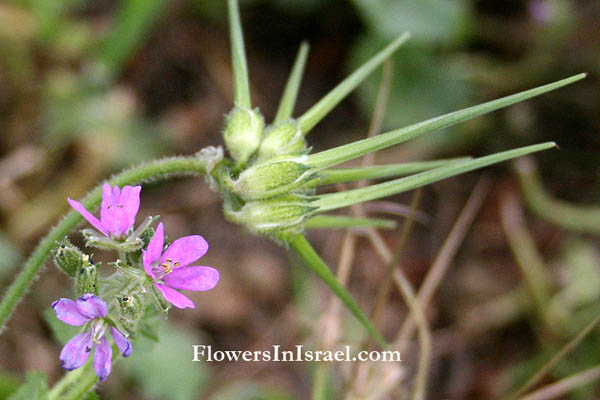Hebrew: מקור-חסידה יפה, Arabic: الرقمة العنبية
| Scientific name: | Erodium botrys (Cav.) Bertrol | |
| Common name: | Longbeak stork's bill, Broadleaf filaree | |
| Hebrew name: | מקור-חסידה יפה | |
| Arabic name: | الرقمة العنبية | |
| Plant Family: | Geraniaceae, גרניים |

|
| Life form: | Therophyte, annual | |
| Stems: | to 40 cm high; ascending to erect; short-hairy | |
| Leaves: | Alternate, compound, pinnate, dentate or serrate | |
| Inflorescence: | Umbels of 1–3 flowers | |
| Flowers: | Pedicels (flower stalks) 1–1.5 cm long; sepals to 15 mm long, densely hairy with glandular and some non-glandular hairs; petals slightly longer than sepals; violet | |
| Fruits / pods: | 9–12 cm long; mericarps with glabrous pits at base of awn | |
| Flowering Period: | January, February, March, April, May | |
| Habitat: | Batha, Phrygana | |
| Distribution: | Mediterranean Woodlands and Shrublands | |
| Chorotype: | Mediterranean | |
| Summer shedding: | Ephemeral |

Derivation of the botanical name: Erodium, Greek: erodiós or ερωδιός, a heron; the carpels of these plants resemble the head and beak of a heron. botrys, Greek βοτρυϛ, grape. The Hebrew word: מקור-חסידה, makor chasida / stork beak, is a mistake in the translation (chasida means stork). In Greek, the stork is called Πελασγός pelargos, pelargonium.
|